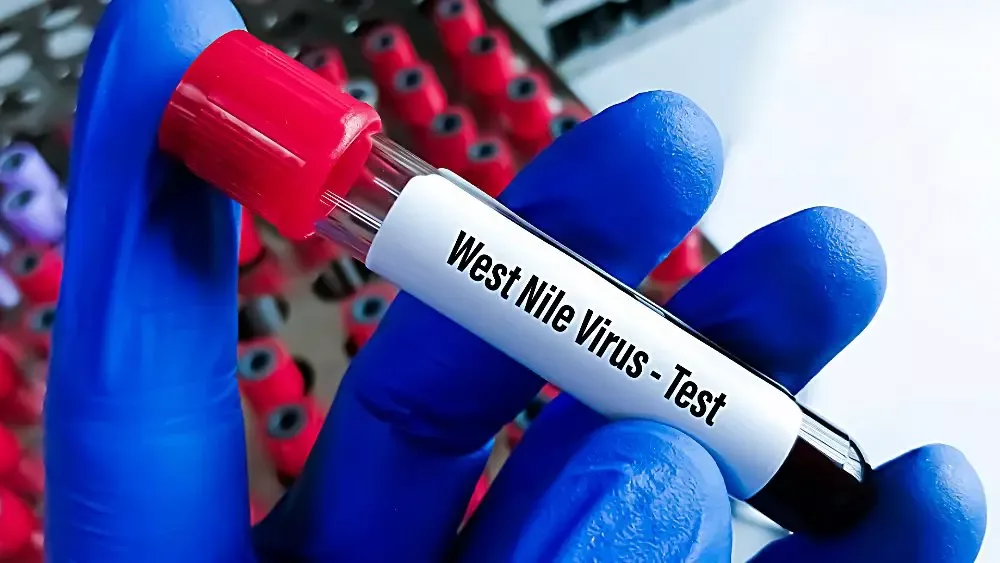SPRINGFIELD – The Center for Disease Control and Prevention (CDC) has confirmed Illinois’ first human case of West Nile virus (WNV) of 2025 in an individual from southern Illinois who was hospitalized due to complications of the infection. About one in 150 people who contract the disease caused by a bite from an infected mosquito develop a severe illness that can affect the brain, spinal cord, nerves and even cause paralysis.
The case marks the earliest onset of illness observed in Illinois since 2016, and underscores the risk posed by mosquito bites, especially to those who are over 65 or immunocompromised.
So far in 2025, WNV has been confirmed in 19 counties. The first WNV-positive mosquito batch of this year was found May 9 in Rockford. In 2024, there were 69 confirmed human cases of WNV including 13 deaths, the highest number since 17 WNV-related human deaths recorded in 2018.
“The fact that we are seeing the first human case of West Nile virus so early in the season serves as a timely reminder – especially for seniors and those with weakened immune systems – to protect yourself from illnesses caused by mosquito bites,” said IDPH Director Dr. Sameer Vohra. “I encourage all Illinoisans to ‘Fight the Bite’ and take precautions to protect themselves and their loved ones.”
IDPH urges the public to Fight the Bite by practicing the three “R’s” – reduce, repel, and report:
- REDUCE – Make sure doors and windows have tight-fitting screens. Repair or replace screens that have tears or other openings. Try to keep doors and windows shut.
- Eliminate, or refresh each week, all sources of standing water where mosquitoes can breed, including water in bird baths, ponds, flowerpots, wading pools, old tires, and any other containers.
- REPEL – When outdoors, wear shoes and socks, long pants and a light-colored, long-sleeved shirt, and apply an EPA-registered insect repellent that contains DEET, picaridin, oil of lemon eucalyptus, IR 3535, para-menthane-diol (PMD), or 2-undecanone according to label instructions. Consult a physician before using repellents on infants.
- REPORT – Report locations where you see water sitting stagnant for more than a week such as roadside ditches, flooded yards, and similar locations that may produce mosquitoes. The local health department or city government may be able to add larvicide to the water, which will kill any mosquito larvae.
A county is considered positive for West Nile virus if a mosquito, horse or human from that county tests positive for the virus. The counties to report WNV so far this year included Bureau, Christian, Clinton, Cook, DeKalb, DuPage, Fulton, Grundy, Hancock, Henry, Marshall, McDonough, McHenry, Peoria, Scott, Stark, Tazewell, Wayne and Winnebago. Last year, WNV was confirmed in 72 counties in Illinois.
IDPH supports mosquito control efforts throughout the state by providing $2.8 million in funding to Illinois’ 97 local health departments for vector surveillance and control activities. This includes purchasing and applying larvicide, working with municipal governments and local news media for WNV prevention and education, and investigating mosquito production sites and nuisance mosquito complaints. Local health departments collect mosquitoes for West Nile virus testing.
Monitoring for WNV in Illinois includes tests for mosquito batches, as well as testing sick horses and humans with West Nile virus-like symptoms.
West Nile virus is transmitted through the bite of a Culex mosquito, commonly called a house mosquito, that has picked up the virus by feeding on an infected bird. Common symptoms include fever, nausea, headache and muscle aches. Symptoms may last from a few days to a few weeks. Most people infected with West Nile virus will not show any symptoms; however, in rare cases it can lead to severe illness including paralysis, meningitis or encephalitis (i.e. brain and nerve infections), or even death. People older than 60 and those with weakened immune systems are at highest risk for severe illness.
Click here for additional information about West Nile virus.





